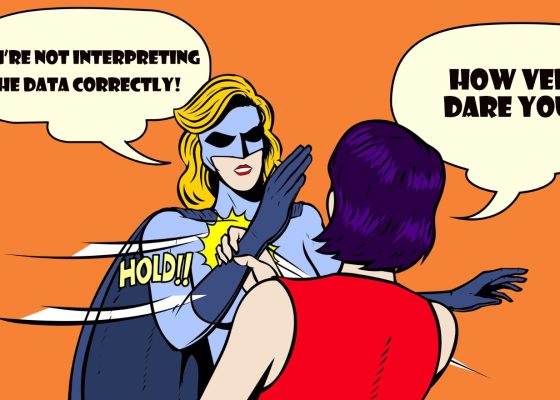In which I navel-gaze about navel-gazing. Irony, thy name is aged care.
Aged care is not pleasant. Not for anyone. It absolutely should be for residents. Too often, it is anything but.
It’s very often not pleasant for aged care workers – largely underpaid (though improving), often overworked (again, improving) and caring for people who are increasingly complex, challenging, and downright cranky.
GPs don’t like it. That’s patently clear in how few of them visit aged care homes these days. More on that later.
I don’t enjoy aged care. Mainly that’s because my 86-year-old mother no longer recognises me and keeps calling me “that strong young man” despite the fact that I’m grey-haired, 60 and decidedly female. You do you, vascular dementia.
Politicians certainly don’t like aged care, or at least John Howard-era politicians didn’t, or they would never have privatised the sector the way they did in the late 90s.
The mighty dollar has beaten out the frail resident ever since, leaving us with a system that needed a huge royal commission and the biggest reform package since 1997 to fix. Or at least try to fix.
Yesterday I found a little bit of hope during a webinar between sector luminaries yesterday, hosted by HSD publisher Jeremy Knibbs.
While acknowledging that connecting a sector with wildly varying digital maturity and resources to GPs, hospitals, specialists, allied health, carers and families, as well as government agencies is a complicated task, the consensus was that if we just stop navel-gazing, it might just be more doable than we think.
As we reported yesterday, Josh Mundey, CEO of Visionflex, put it very simply.
“We don’t need massive change here,” he said.
“It’s just about connecting some of these things that are already happening.
“It’s a replication strategy, not a revolution. There are pockets of excellence and we need to replicate them and get some people around them.
“This doesn’t need to be as hard as we make out,” he said.
“We just need to stop admiring the problem and get on with solving it.”
Amen.
One issue that will require some hard thinking by the DoHDA, and the RACGP, AMA and anyone with an interest in general practice is how to get GPs back to the good old days of being engaged with aged care residents.
“Everything in general practice is about how to tick the box for accreditation, how to tick the box so I don’t fall in trouble with clinical governance, how to tick the box so that we have these care plans, and the reviews … we’ve forgotten the person in the middle of it,” said Associate Professor Alam Yoosuff, vice-president of the Rural Doctors Association of NSW, a GP, and board member of the Murrumbidgee LHD.
GPs used to be and should be today, the navigators of the system for senior Australians, he said.
“I believe GPs are the people there for this,” he told the webinar.
“GPs need to be the navigator of this system and the custodian of taking the patient on this journey.
“GPs were doing it for years, right? They started moving away from it because it wasn’t attractive. It wasn’t working. It wasn’t conducive for what they’re going to do with the current system.
“How do we make GPs interested in doing that again? How do we get GPs attracted to [working in aged care].”
The bottom line? GPs aren’t interested in working in aged care because it doesn’t remunerate well for the time it takes to do, said Dr Yoosuff. Plus, these are very often complicated patients.
“GPs are interested in how to manage their patch and requirements for the accreditation and clinical governance and risk related stuff,” he said.
You can’t blame them. Financial incentives to visit aged care facilities are a joke and have been for a long time. GPs aren’t compensated for travel time, nor for the time it takes spent wandering the halls of RACFs searching for records, the care manager, the pharmacist (if there is one) or the patient.
Related
Add to that the patients not seen back at the clinic in the meantime and you can see why GPs are wiping their hands of anyone who can’t make it into their surgery.
None of which sounds very hopeful, but the webinar pointed the way to some solutions.
Bettina McMahon from Healthdirect Australia also refined the message down to a simple dichotomy between waiting for some guru in the DoHDA to come up with a Big Hairy Reform like the NDIS, or centring the patient, and getting done what can be done with what’s available right now.
And what’s available is pretty good. Mr Mundey’s Visionflex has 500 pieces of telehealth kit in aged care homes right now, already reducing hospitalisations by connecting aged care staff to specialists and GPs to keep people like my mother out of ambulances and emergency departments.
He thinks he can scale that up to cover every RACF in the country for between $50 million and $70 million at an ongoing cost of $7-10 million a year.
Sounds pretty good to me. All it needs is secure funding beyond the length of a PHN contract and a federal election cycle.
“There’s AI around patient monitoring and sensors right now that can solve problems, and is already solving problems,” said Mr Mundey.
When it comes to funding, he said, the question asked should be “what happens if we don’t”?
“Look at the cost of not doing it. Like, what’s the workforce burnout? How many ambulance callouts are there? How many admissions do we need to have into hospital?
“You can look at everything in a silo. Or you can take a little step back and say, well, if we don’t do this, it’s going to be 50 times worse.”
Interesting stuff. The full recording of the webinar will be up next week. Be sure that we will post it on HSD when it’s ready.
Have a good weekend.




